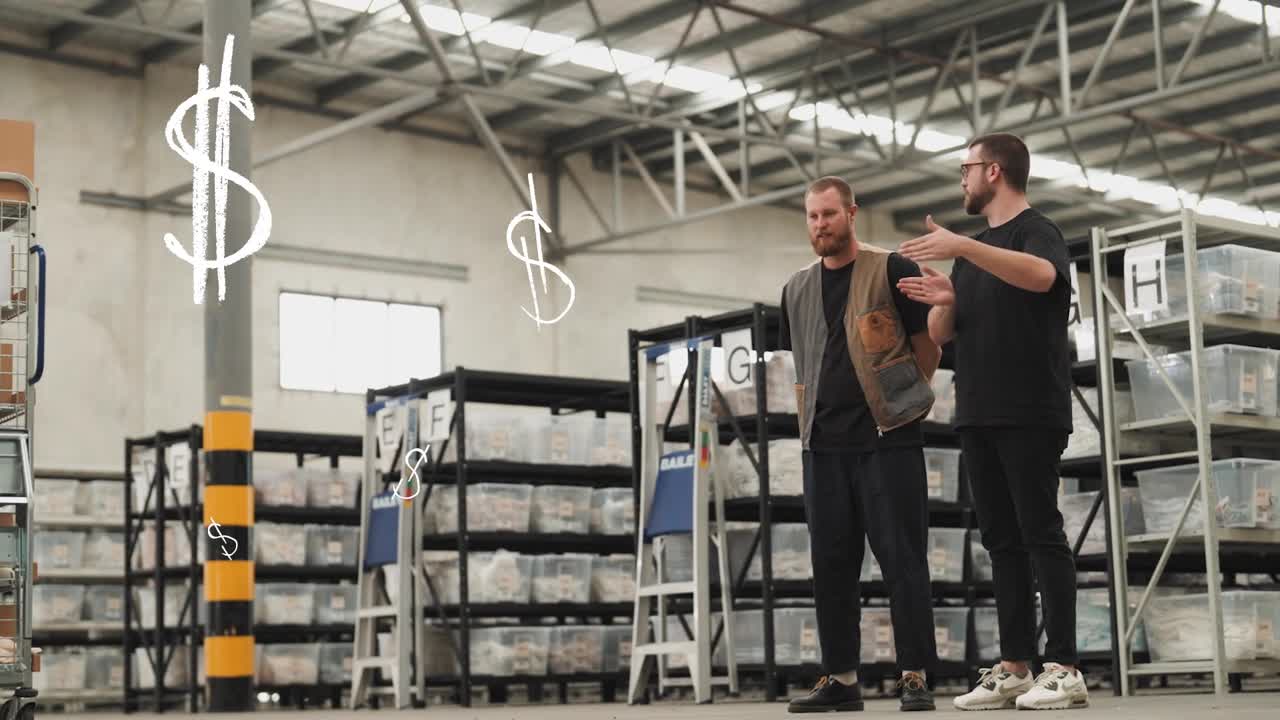The E-Commerce Berlin Expo 2023 showcased the latest industry trends, covering everything from AI to sustainability and social commerce, including augmented reality, omnichannel experiences, and data-driven insights. These 8 trends allow you a glimpse into the future of ecommerce and will help you define strategies to meet changing customer needs.
The E-Commerce Berlin Expo marks the beginning of the ecommerce trade show season in the early spring every year and never fails to exceed expectations. As always, 2023 was a bustling event, with businesses from all over the world showcasing the latest ecommerce technologies and strategies. Our warehouse logistics expert, Haris Butt, visited the event and provided us with exclusive insights into the latest ecommerce trends and technologies.
Here are Haris’ 8 innovative trends from the expo that we think online retailers will benefit from the most:
1. Personalisation
One of the main focuses of many businesses at the expo was providing personalised experiences to their customers. Haris saw that companies are utilizing customer data and artificial intelligence (AI) to analyse customer behaviour and preferences, allowing them to tailor recommendations and promotions to each individual buyer. Some businesses are even experimenting with hyper-personalisation, which uses real-time data to make recommendations based on the customer’s current context, such as location or weather. These strategies not only help businesses stand out in a crowded market but also enhance the customer experience by providing relevant and useful recommendations, improving customer experience and driving sales and increasing loyalty in the process.
2. AI and Automation
Artificial intelligence (AI) and automation were the stars of the expo, with several businesses showcasing how they are leveraging these technologies to streamline processes and enhance the customer experience. Chatbots are being used to provide customers with instant support, answering questions and addressing concerns in real-time. Also of interest in this context are PIM (Product Information Management) solutions that automatically push product data to online store systems and marketplaces via bidirectional interfaces, thus helping retailers to always display correct and up-to-date product descriptions to customers. Automated warehouse management systems are being used to reduce errors and delays, resulting in faster and more efficient order fulfilllment. Another exciting development was the use of robotics in warehouses, such as a multi-order picking robot, which can handle multiple orders at once, reducing the time and resources needed to fulfilll orders accurately. These innovations not only improve operational efficiency but also allow businesses to provide faster and more reliable service, ultimately improving the customer experience.
3. Sustainability
With environmental concerns on the rise, sustainability is a key factor in a number of ecommerce trends. Businesses are recognising the importance of reducing their environmental impact and are incorporating sustainable practices into their operations. Many businesses are using eco-friendly packaging made from biodegradable or recyclable materials to reduce waste and pollution. Carbon offset programs are also becoming more popular, with companies investing in projects that reduce or offset their carbon emissions. Furthermore, businesses are prioritising sustainable sourcing, seeking out suppliers that adhere to sustainable practices and ethical labour standards. By adopting sustainable practices, businesses can not only contribute to a more sustainable future but also appeal to eco-conscious customers who prioritise sustainable products and practices.
4. Social Commerce
Social media has become an integral part of the ecommerce landscape, providing businesses with an opportunity to connect with customers and build brand awareness. At the trade show, many businesses showcased their innovative strategies for leveraging social media to drive sales and engage customers. Social media influencers are becoming increasingly popular for promoting products and driving sales, and partnering with influencers enables businesses to reach a wider audience and tap into their followers’ trust and influence. By leveraging social media platforms, businesses can not only increase their reach and exposure but also create a more engaging and interactive shopping experience for customers. The matter of social commerce does also require shareable content, with which businesses can showcase their products in creative and engaging ways, such as short-form video content like Instagram Reels and TikTok videos.
5. Augmented Reality
By incorporating AR technology into their ecommerce platforms, online vendors can enhance the customer experience and differentiate themselves from competitors. Augmented reality technology is revolutionising the way customers shop online by providing a more immersive and interactive shopping experience. Many businesses showcased their innovative use of AR technology to help customers visualise products before making a purchase. For instance, in the clothing industry, AR-powered virtual try-on allows customers to see how clothes will look on them before making a purchase, increasing the likelihood of a successful sale. Similarly, AR-powered home decor visualisation allows customers to see how furniture and other home decor items will look in their space before making a purchase, reducing the likelihood of returns and increasing customer satisfaction. One particularly interesting innovation at the show was a company that offers retailers a special camera. The device is used to take product pictures from any angle, which are then used in the online store with AR technology. Alternatively, it is also possible to send the products to the company and have the images taken there as a service for them.
6. Payment Innovation
Another area of focus at the trade show, were innovative payment solutions that meet the changing needs of customers. The rise of ecommerce has led to a fundamental shift in the way people shop, with more and more customers opting for the convenience of online shopping. This has created a demand for faster, more secure, and more convenient payment solutions that can keep up with the pace of online transactions. In response to this demand, businesses are constantly innovating and developing new payment methods that offer more flexibility and choice to customers. Mobile payments, for instance, allow customers to make purchases using their mobile devices, while digital wallets offer a secure and convenient way for customers to store their payment information and make purchases with a single click. Cryptocurrency is another innovative form of payment that is gaining popularity due to its speed and security, and several businesses at the expo showcased their support for this emerging payment method.
7. Omnichannel Experiences
From in-store pickups to cross-channel loyalty programs – omnichannel businesses are finding ways to provide a seamless experience across all touchpoints. By allowing customers to use their mobile devices to browse and purchase products, businesses can bridge the gap between their online and offline experiences. Additionally, businesses are also using data-driven insights to provide a more personalised experience for customers across all channels. Moreover, by analysing customer data from online and offline interactions, businesses can tailor their marketing messages and product offerings to each individual customer.
8. Data-Driven Insights
With so much data available to businesses, many exhibitors showcased how they are leveraging data to make smarter decisions and improve their ecommerce strategies. By taking a closer look at their customers’ behaviour and preferences, businesses can offer tailored product recommendations, special offers, and personalised promotions. Additionally, businesses are also using this data to optimise their supply chain operations, by predicting demand and optimizing inventory management, thus allowing them to make more informed business decisions.
One thing Haris points out, is evident: the newest trends in ecommerce technology and strategy presented at the E-Commerce Berlin Expo offer a diverse range of opportunities for online vendors to provide the best possible customer experience. Companies that embrace personalisation, AI, sustainability, and data-driven insights, will find ways to continuously meet the changing needs of their customers. Those businesses will be able to stay ahead of the competition! The Expo demonstrated that the future of ecommerce is a combination of technology and customer-focused strategies at every step of the buying process, from the moment the customer clicks the “Buy now”-button, along the order fulfillment in the warehouse, until the order reaches the customer.
About Haris Butt
Haris is a warehouse logistics expert at Descartes Systems and has many years of experience in the ecommerce business. He is available to answer your questions about warehouse management systems, increasing efficiency in order processing, ERP use, ecommerce fulfillment or D2C fulfillment. Please feel free to make an appointment with him directly here or connect with him on LinkedIn.





